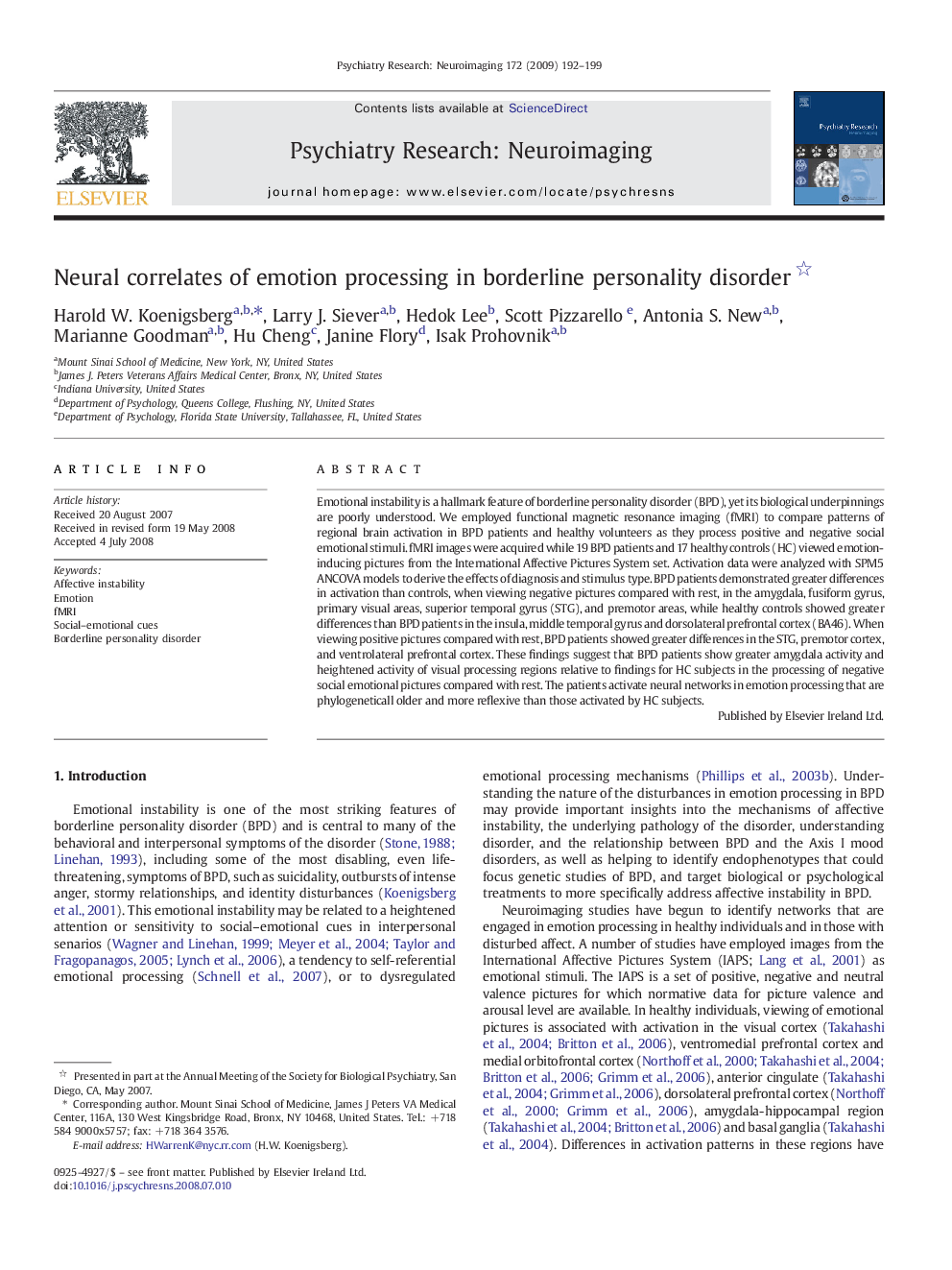| Article ID | Journal | Published Year | Pages | File Type |
|---|---|---|---|---|
| 335163 | Psychiatry Research: Neuroimaging | 2009 | 8 Pages |
Emotional instability is a hallmark feature of borderline personality disorder (BPD), yet its biological underpinnings are poorly understood. We employed functional magnetic resonance imaging (fMRI) to compare patterns of regional brain activation in BPD patients and healthy volunteers as they process positive and negative social emotional stimuli. fMRI images were acquired while 19 BPD patients and 17 healthy controls (HC) viewed emotion-inducing pictures from the International Affective Pictures System set. Activation data were analyzed with SPM5 ANCOVA models to derive the effects of diagnosis and stimulus type. BPD patients demonstrated greater differences in activation than controls, when viewing negative pictures compared with rest, in the amygdala, fusiform gyrus, primary visual areas, superior temporal gyrus (STG), and premotor areas, while healthy controls showed greater differences than BPD patients in the insula, middle temporal gyrus and dorsolateral prefrontal cortex (BA46). When viewing positive pictures compared with rest, BPD patients showed greater differences in the STG, premotor cortex, and ventrolateral prefrontal cortex. These findings suggest that BPD patients show greater amygdala activity and heightened activity of visual processing regions relative to findings for HC subjects in the processing of negative social emotional pictures compared with rest. The patients activate neural networks in emotion processing that are phylogeneticall older and more reflexive than those activated by HC subjects.
